Interactive Pavilion: A Reflective Environment
The pavilion is an aggregation of a module that was designed to respond to exposure to sunlight. Sunlight exposure allows the panels of the module to close, while day light and sunset light allow the panels to open at 90 degrees and 45 degrees respectively. The aggregation of this responsive device allowed the rendition of an interactive space that responds to sunrise, striking sun, sunset, and night time.
Concept
Wheat awn behaviors were inspirational since their opening and closing mechanisms and purposes are great examples of actuation upon input from day time versus night time. This actuation of wheat awn based on exposure to sunlight set the target goal for the interactive model that was to be designed. Panels were developed to represent the physicality of the plant, hinges to represent the unmovable pivot of the wheat awn, and rotations were determined to actuate the openings and closures based on exposure to sunlight.

Burgert, Ingo and Peter Fratzl. “Actuation systems in plants as prototypes for bioinspired devices.” Philosophical Transactions of the Royal Society A: Mathematical, Physical and Engineering Sciences 367 (2009): 1541 – 1557.
Elements & Assembly
A slim wooden frame is used to sandwich servo motors which allowed the panels to move. The input was different levels of light [sunrise, striking sunlight, sunset, no light…]. The screws and T-shaped hinges carry the wooden frame together, and 3D printed L-shaped clams connect the panels to the motors.
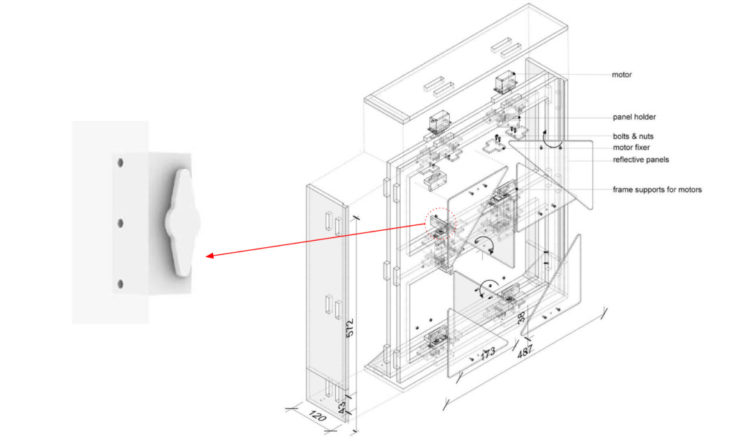
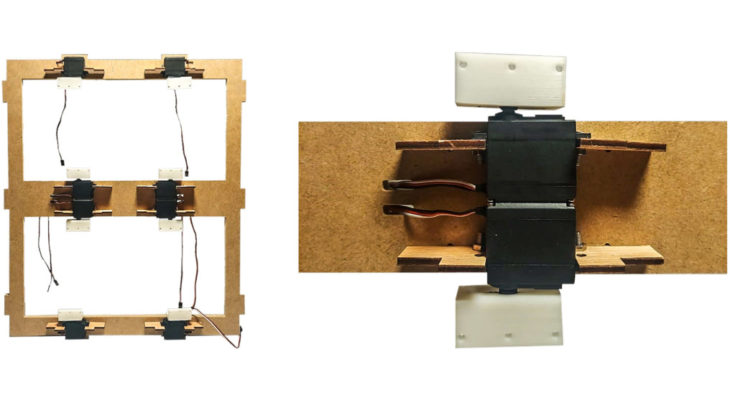
Wiring & Actuation
For the module, 8 servo motors were used for 8 laser cut panels.
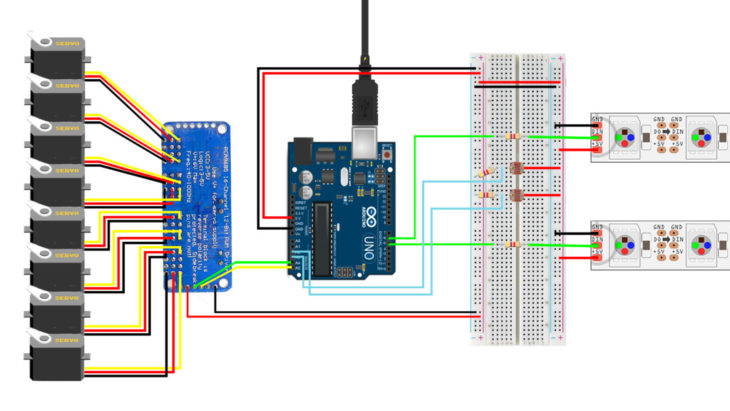
The panels were reflective as they could dodge light to the outside or introduce second-hand softer light to the inside. In future prospects, these panels may be photovoltaic in order to convert the heat energy to electrical energy. When aggregated, an automated panel may be formed:
From Interactive Module to Interactive Environment
The architecture was developed in a way that tests the reactivity of each of the panels regardless where they are placed on the compass. This allowed several probabilities of scenarios and angles with which the panels rotate automatedly. The architecture is a pavilion that has space for open mobility within. The panels are 6 in number hence creating an octagon with slits to allow navigation. A glass surface acts as a shell to the pavilion while the automated panels sit in a protected environment. This allows less exposure of the motors and joints to wind and dust.
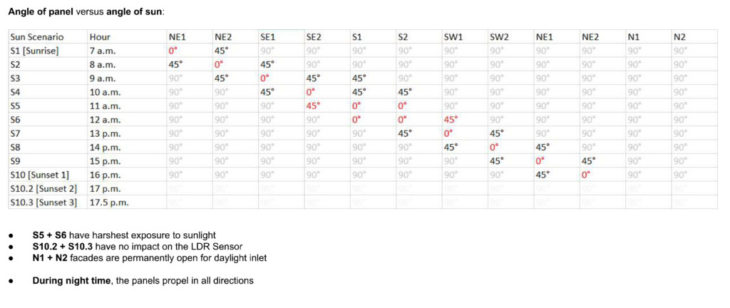
Day time vs Night time
The aggregates behavior is photo-sensitive when the sun is up; however, during night time, the interactive environment is playful and exuding light due to Neopixels placed around the reflective panels that dance in all directions:
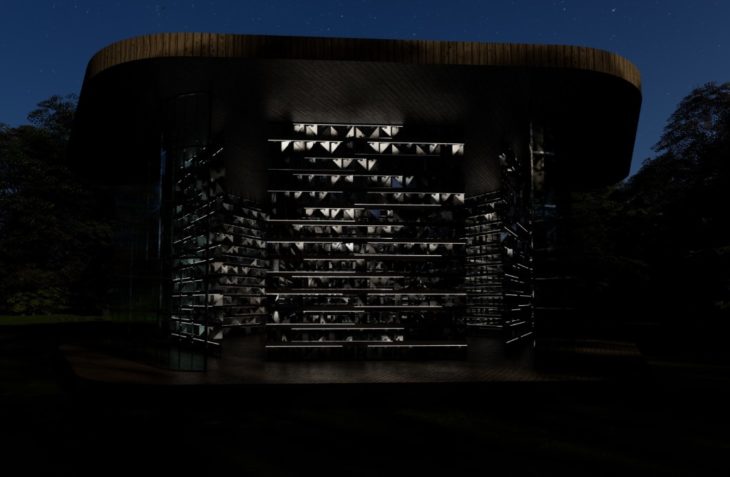
Final Video
Interactive Pavilion: A Reflective Environment is a project of IAAC, Institute for Advanced Architecture of Catalonia developed at the Master in Advanced Architecture in 2021 by: Nader Akoum, Vaibhav Toshniwal, Sabina Javanli, and Leorick Chilimanzi; Faculty: Angel Muñoz & Cristian Rizzuti
